The B&D Ski Gear binding toe shim is designed to stack nearly any tech binding toe (with favor to Dynafit Radical or Vertical ST for best fit) up 1/4 inch. With average boot sole lengths, result is about 3 degrees less ramp. That still leaves some angle, but is a noticeable change.
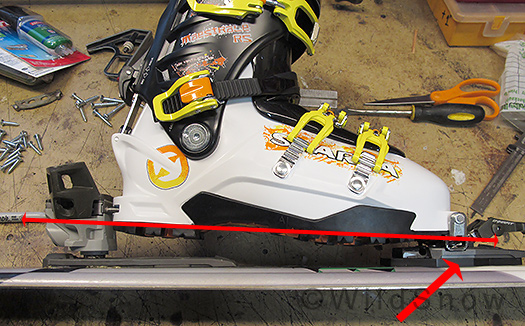
Final result, Scarpa Maestrale RS with a Dynafit Vertical ST, toe raised 1/4 inch. Still a bit of ramp, but about 3 degrees less than with a stock binding.
I’m not going into detail about why you’d change your ramp angle. Those of you who need to do so usually know it. Suffice it to say that for some styles of skiing, and some folk’s knees, being jacked forward on your tiptoes is not necessary.
That said, ramp angle in ski touring bindings isn’t all bad. Some folks like to have gobs of it, and it provides a sort of “automatic” way of changing your boot angle depending on if you’re in ski mode or walk mode — without having to build the ramp angle into the boot. In other words, the boot can walk uphill nicely while you’re on or off your skis, you then receive enough ramp angle from the binding to perform on the down.
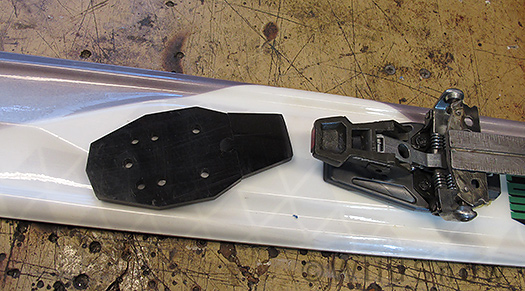
Plate to left, before install. It's actually two pieces so it adapts to different tech binding base shapes. B&D will provide screws, but depending on applications you may have to shorten your screws.
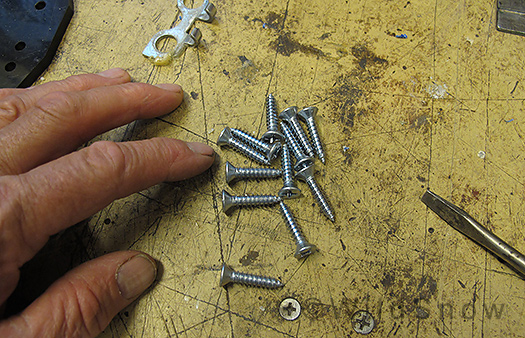
I didn't get screws from B&D. These 1-inch #12 wood screws were too short. Seemed that 1 1/4 screws were just about right, but for my final non-demo install I'll probably have to shorten some longer screws to get them just right. 'Farmer' style wood screw shortening is done by cutting the tip off, then simply grinding a sharp tip so the screw can get started in the hole. Not that tough, but takes a bit of time for a full set. Also, you'll have to make a 'trim head' screw for the front screw in 5-screw bindings. This is done by chucking the screw in a hand drill, then holding it against a disk grinder for a moment.
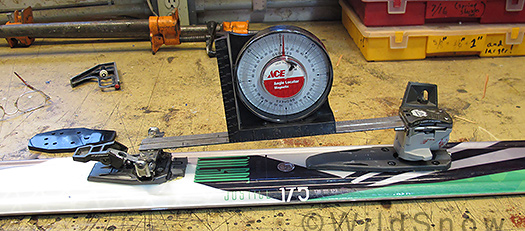
Ramp angle before installation of shim. Remember that the boot has its own ramp due to the location of toe and heel fittings as well as the shape and thickness of plastic below your foot.
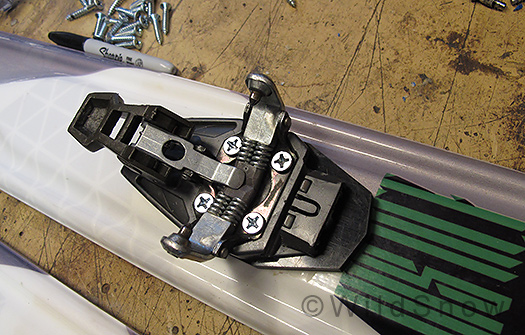
B&D plate installed. Hardware store #12 wood screw heads are a bit high but don't seem to interfere with anything. Remember that the screw head for the front fifth screw has to be trimmed. Note the crampon mount is installed, but it's higher off the ski so you'll have less crampon penetration.
The units are in two pieces (see B&D website), in total they weigh 1.7 ounces (48 gr) each. They can be mounted in many situations without the extra smaller piece. With the smaller piece eliminated the weight is 1.3 ounces (36 gr).
WildSnow.com publisher emeritus and founder Lou (Louis Dawson) has a 50+ years career in climbing, backcountry skiing and ski mountaineering. He was the first person in history to ski down all 54 Colorado 14,000-foot peaks, has authored numerous books about about backcountry skiing, and has skied from the summit of Denali in Alaska, North America’s highest mountain.
